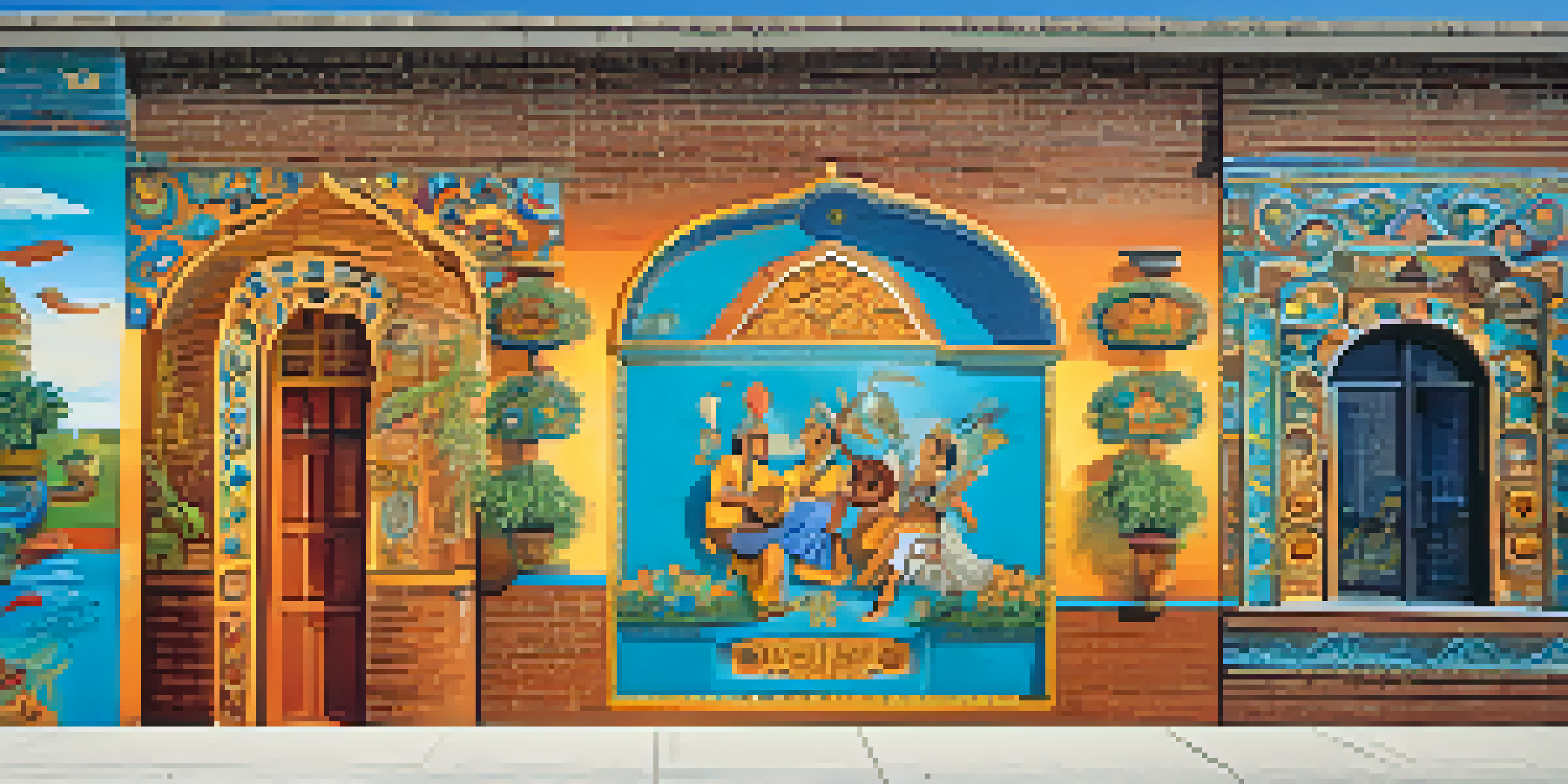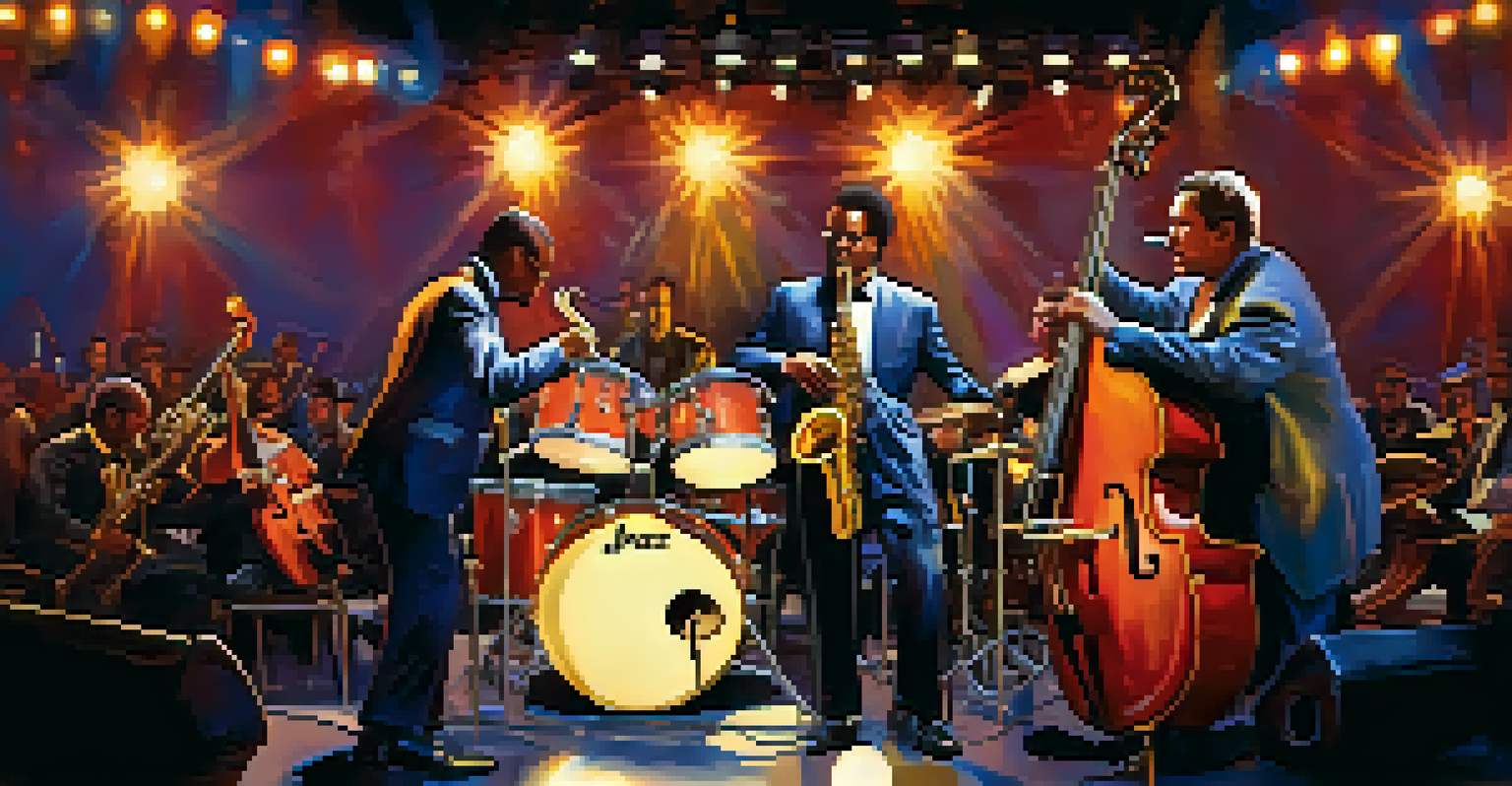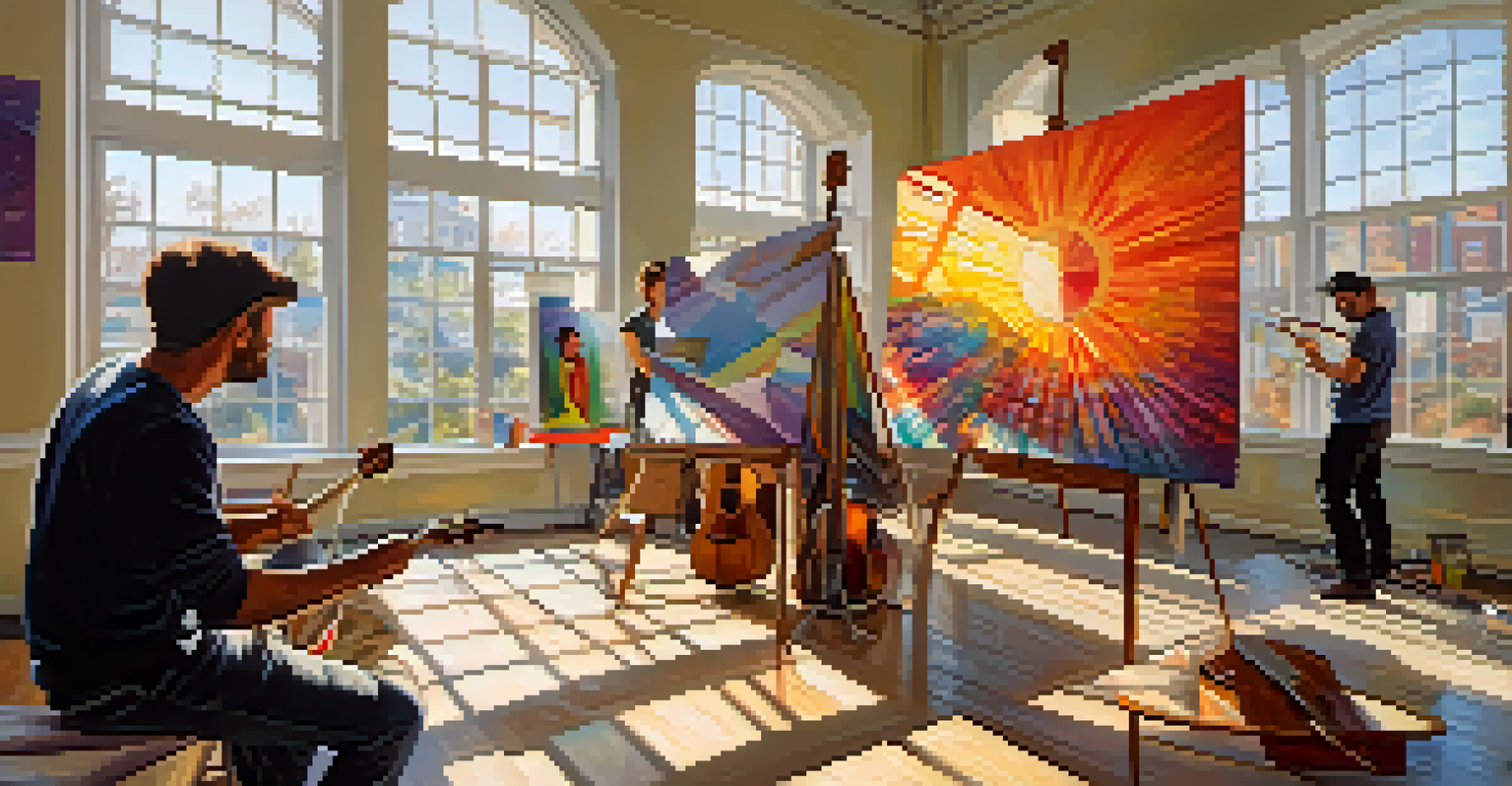Artistic Collaboration: The Power of Collective Performance

Understanding Artistic Collaboration and Its Importance
Artistic collaboration is the process where multiple creators unite to produce a shared work of art. This practice can take many forms, from musicians jamming together to visual artists co-creating murals. The essence of collaboration lies in the blending of diverse talents and perspectives, which often leads to unexpected and innovative results.
Alone we can do so little; together we can do so much.
By pooling their skills and ideas, artists can push boundaries and explore new avenues of creativity that they might not have discovered alone. Think of it like a potluck dinner, where each participant brings a unique dish to the table, creating a feast that's richer and more varied than any single dish could provide.
In today's fast-paced world, collaboration has become more essential than ever. It fosters a sense of community among artists and helps them to navigate the challenges of their individual practices, ultimately enriching the artistic landscape.
The Synergy of Creative Minds in Performance
When artists collaborate in performance, the synergy created can electrify an audience. Imagine a jazz band where each musician improvises off one another; the result is a dynamic experience that evolves in real-time. This interplay not only showcases individual talents but also highlights how collaboration can elevate the entire performance.

Collective performances allow artists to take risks they might avoid in solo work. Each member's contributions can inspire others, leading to spontaneous creativity that resonates with both the performers and the audience. It’s in these moments of shared energy that true magic happens.
Artistic Collaboration Sparks Innovation
By combining diverse talents and perspectives, artists can create unique works that push creative boundaries and enhance the artistic landscape.
Moreover, collaborative performances often break down barriers between genres and styles, creating a unique tapestry of sound, movement, or visual art. This blending enriches the audience’s experience and challenges traditional notions of artistic boundaries.
Building Trust and Communication Among Artists
Successful collaboration hinges on trust and effective communication among artists. This foundation allows them to express their ideas openly and to feel safe taking creative risks. Think of it as a dance; without coordination and understanding, the performance can easily fall apart.
Collaboration allows us to know more than we are capable of knowing by ourselves.
Establishing this trust requires vulnerability and a willingness to listen. Artists must be open to feedback and willing to embrace different perspectives, recognizing that each voice adds value to the collective effort. This willingness not only strengthens relationships but also enhances the creative output.
In the long run, strong communication fosters a rich environment where ideas can flourish. Artists who feel valued and understood are more likely to contribute their best work, resulting in a collaboration that is both fulfilling and innovative.
The Role of Technology in Artistic Collaboration
Technology has transformed the landscape of artistic collaboration, offering new tools and platforms for creators to connect. From virtual reality art projects to online jam sessions, artists can now collaborate without geographical limitations. This accessibility opens doors to global partnerships that were previously unimaginable.
Digital tools not only facilitate communication but also enhance the creative process. For instance, software that allows for real-time editing and sharing of visual art or music means that artists can refine their work together, regardless of their locations. This immediacy can lead to faster innovation and a more fluid creative process.
Trust Fuels Successful Collaborations
Effective communication and trust among artists are essential for fostering an environment where creativity can thrive.
However, while technology offers numerous advantages, it’s important not to overlook the value of in-person interactions. The tactile experience of creating together in the same space can lead to deeper connections and a more profound understanding of each other’s artistic visions.
Cultural Exchange Through Collaborative Art
Artistic collaboration often serves as a platform for cultural exchange, bringing together diverse backgrounds and experiences. When artists from different cultures work together, they not only share their techniques but also their stories and traditions. This blending creates a rich tapestry of art that reflects a broader spectrum of human experience.
For example, a project that combines African drumming with Western classical music can produce a unique sound that honors both traditions. Such collaborations can challenge stereotypes and encourage empathy, promoting a deeper understanding among different cultures.
Through collaborative art, artists also become ambassadors of their cultures, showcasing the beauty and complexity of their communities. This helps to break down barriers and fosters a sense of global unity, reminding us that art is a powerful tool for connection.
Overcoming Challenges in Collaborative Projects
While collaboration can be incredibly rewarding, it’s not without its challenges. Differing visions, communication styles, and work ethics can lead to conflict and frustration. It’s important for collaborating artists to address these issues head-on, creating an environment where concerns can be discussed openly.
One effective way to navigate these challenges is to establish clear goals and roles from the outset. By defining each artist’s contributions and expectations, the group can minimize misunderstandings and work more efficiently. It’s a bit like setting the rules for a board game before starting; everyone knows what to expect, making the experience more enjoyable.
Cultural Exchange Enriches Art
Collaborative projects bring together different cultures, creating art that reflects a broader spectrum of human experience and promotes global unity.
Additionally, flexibility is key. The creative process can be unpredictable, and being open to change can lead to unexpected breakthroughs. Embracing the journey, with its ups and downs, often results in a final product that is richer for the experiences along the way.
The Lasting Impact of Collective Artistic Endeavors
The impact of artistic collaboration often extends beyond the immediate project. Collective performances can inspire future generations of artists and encourage them to explore their own collaborative possibilities. Just like a great book or film, these projects can leave a lasting impression, shaping the way we view art and creativity.
Moreover, successful collaborations can lead to new opportunities for all involved. Artists may find themselves invited to participate in future projects, showcasing their talents to wider audiences. This ripple effect can help build careers and foster a thriving artistic community.

Ultimately, the power of collective performance lies in its ability to unite people through shared experiences. These collaborations remind us of the importance of connection and creativity, encouraging us all to explore the beauty that arises when we come together.